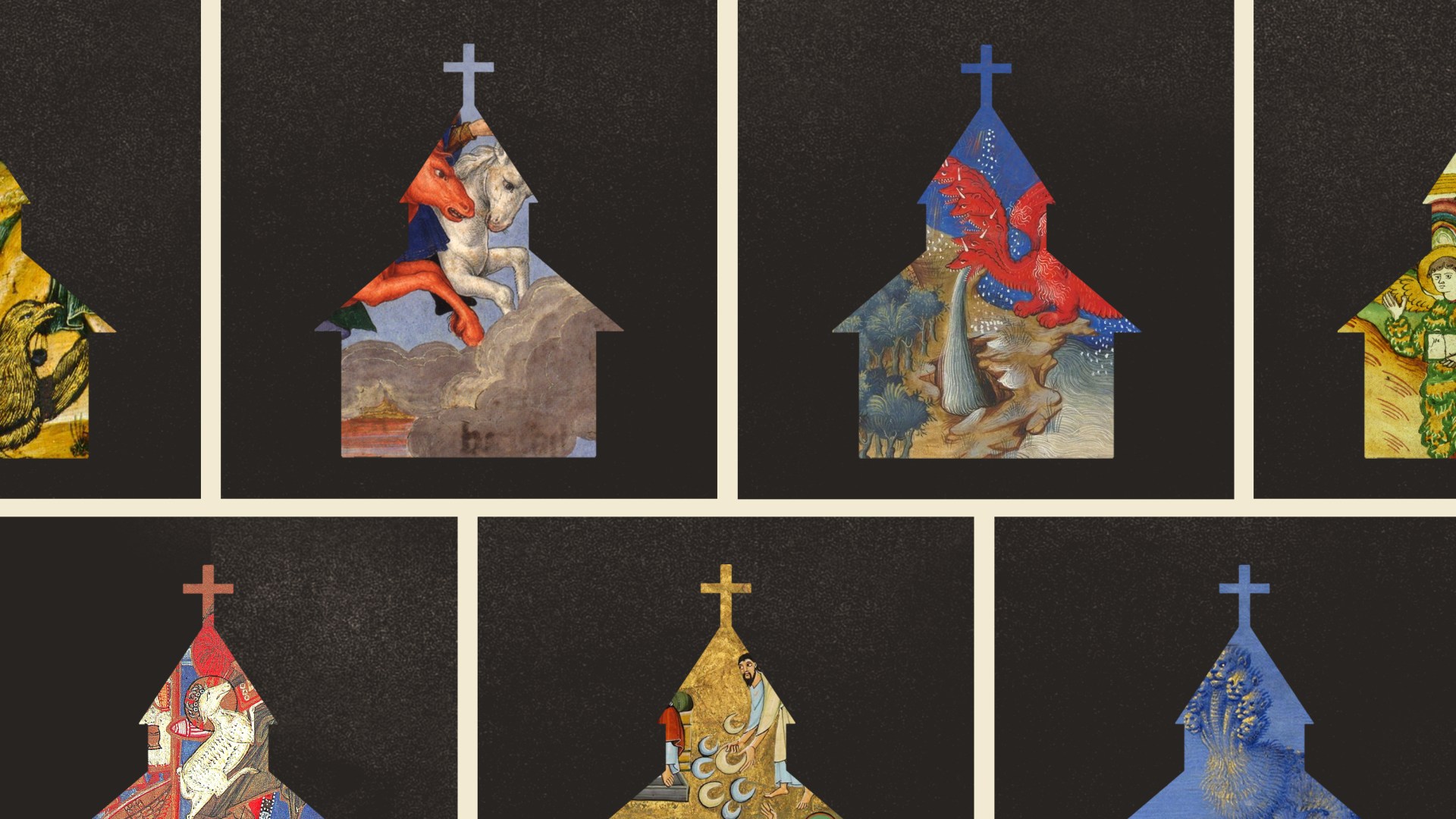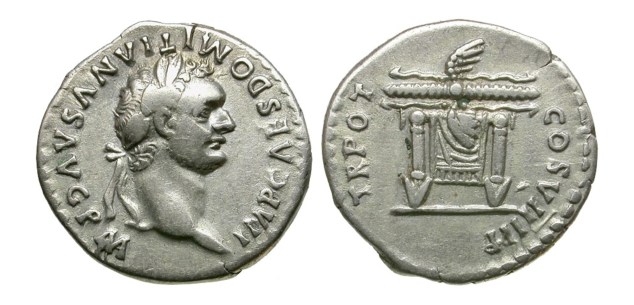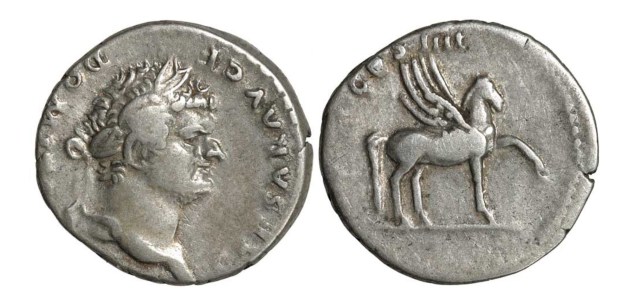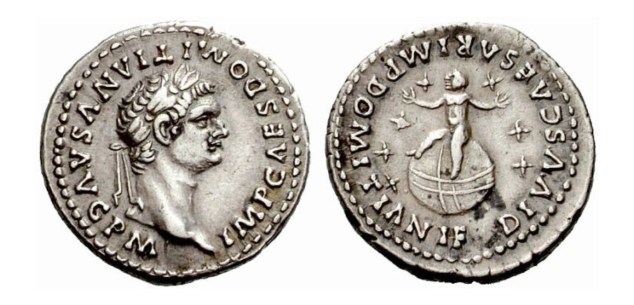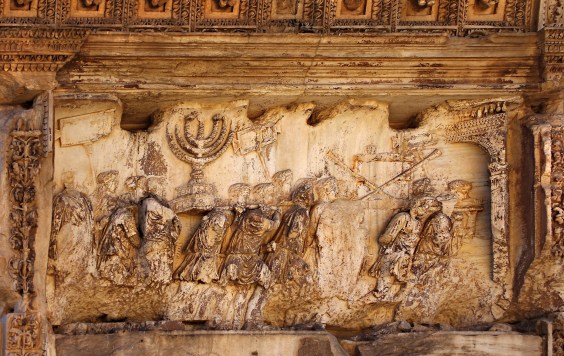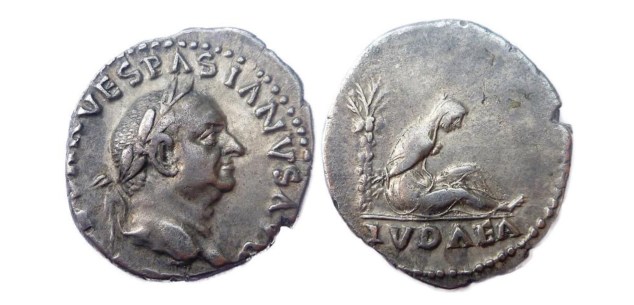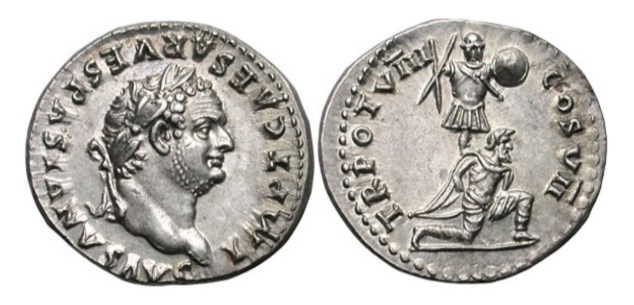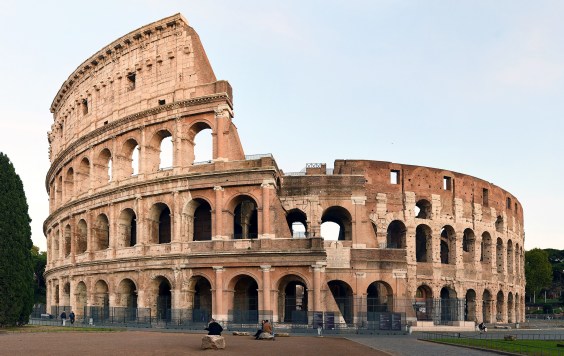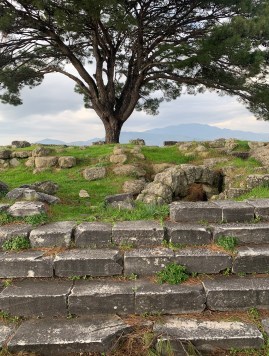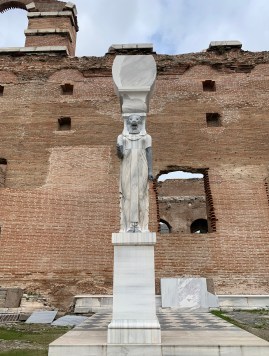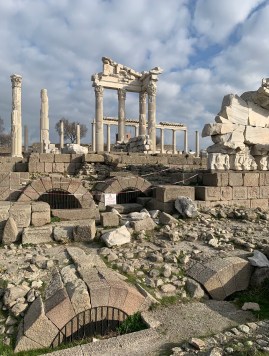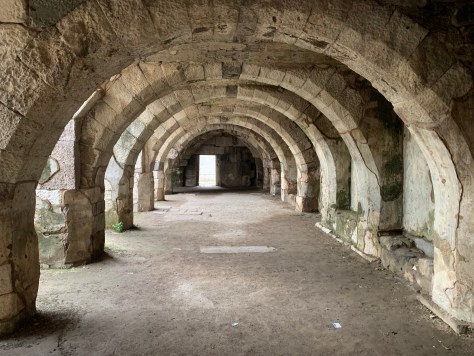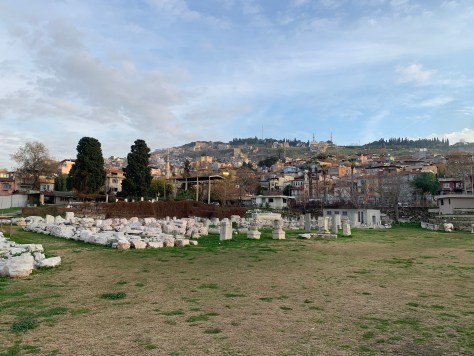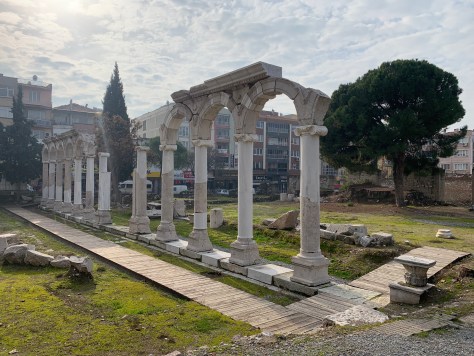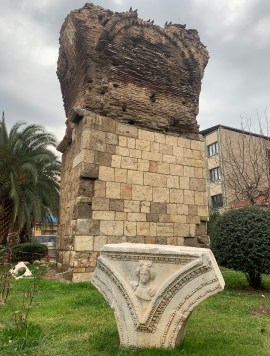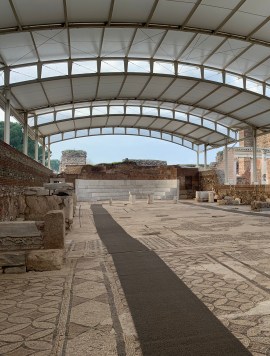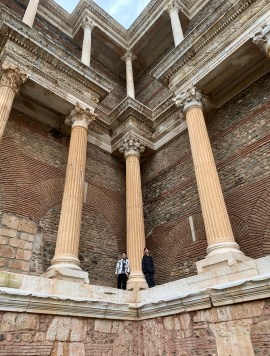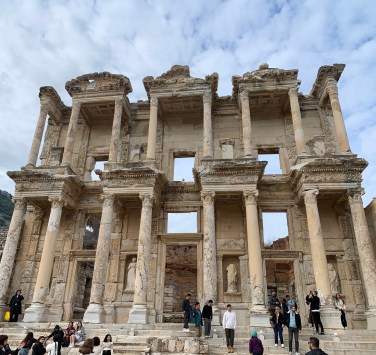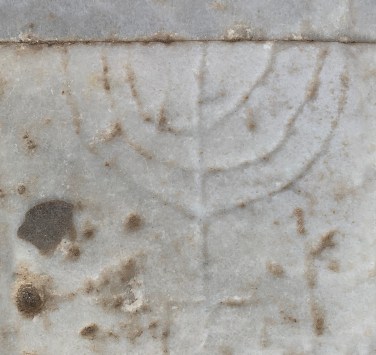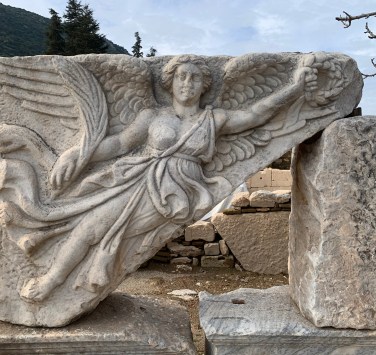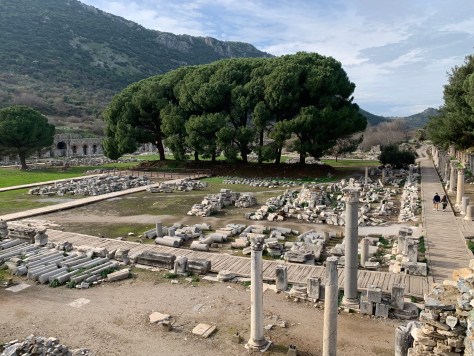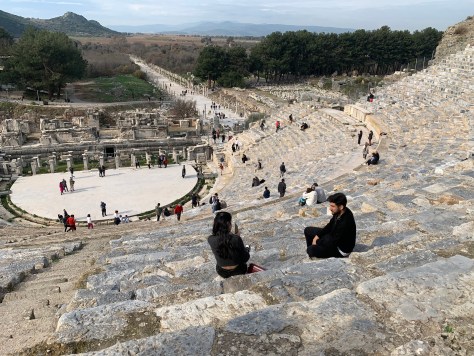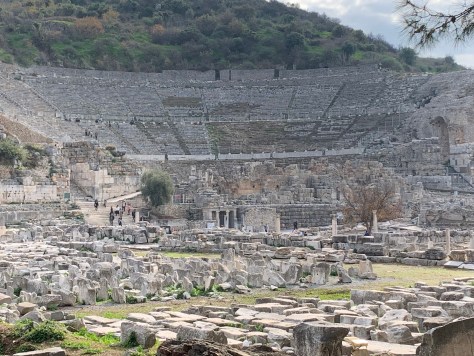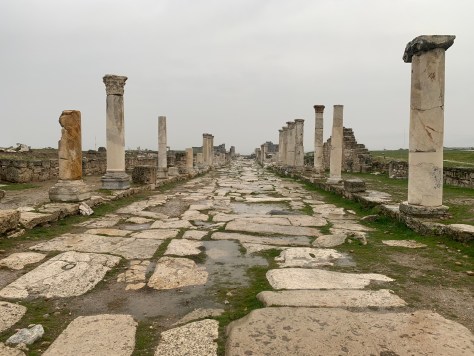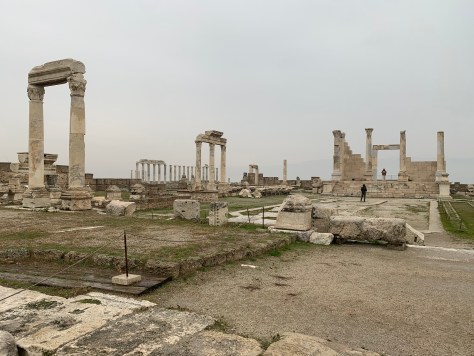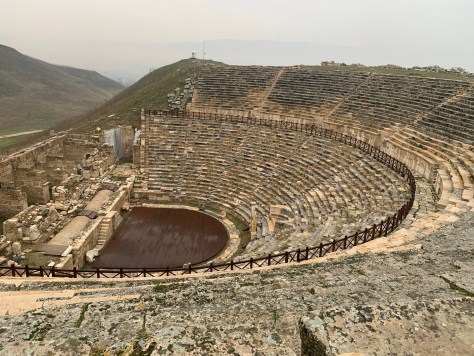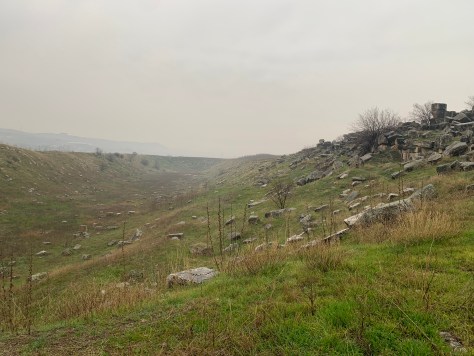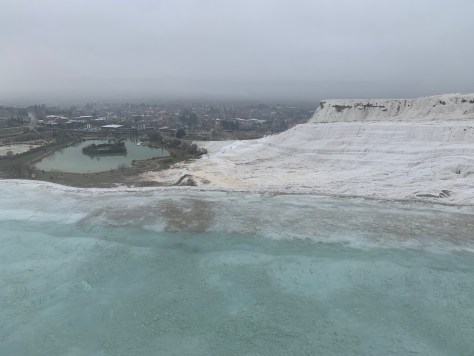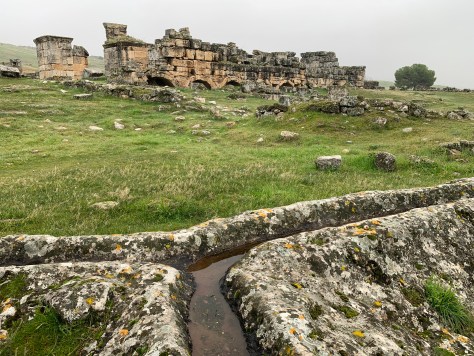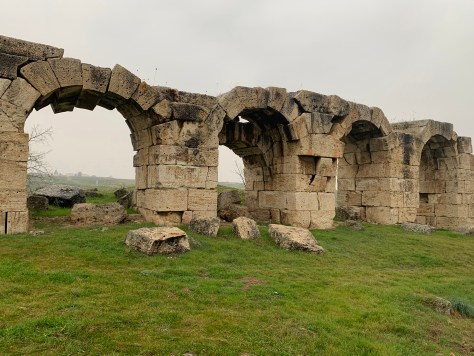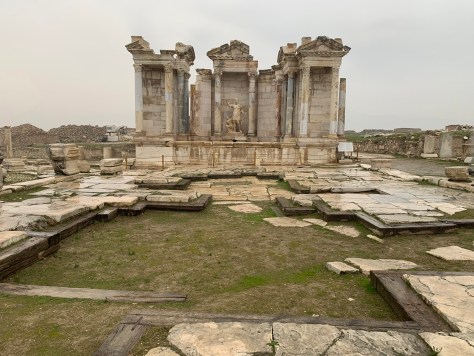Revelation is often interpreted out of context based on current concerns and fearful speculations about the end times. But after a study trip to Turkey—and years of teaching Revelation at my local church in Rome and for conferences—I have come to realize how contextual the book is.
Throughout Revelation, John of Patmos uses powerful imagery to exhort early Christians to resist conforming to the Roman world and to encourage them to remain faithful to Jesus in a world of rival rulers and false deities vying for their loyalty. The book addresses ancient believers in seven cities, like Ephesus and Laodicea, that faced struggles similar to those many Christians experience today.
Most scholars date Revelation back to the reign of Domitian, who issued coins depicting imagery associated with his reign. Remember when Jesus picked up a coin and said, “Give back to Caesar what is Caesar’s” (Mark 12:17)? That’s because Roman emperors often stamped their faces on coins to project their political-religious propaganda.
But these Roman emperors weren’t just making idolatrous claims. They were also using imagery to assert their authority and subjugate the Jewish people, many of whom had embraced Jesus as their Messiah. After the Jewish revolt was crushed by AD 70, Domitian’s father, Vespasian, and later his brother Titus issued coins that portrayed humiliating imagery of Jews and Judea.
The Arch of Titus in Rome narrates the family’s triumphal entry into the city, followed by Jewish captives and spoils stolen from Jerusalem’s temple. Around 97,000 Jews were either killed at various arenas or enslaved and sent to work at mines in Egypt (in a sense, reversing the liberation of the Exodus). Some of them were even tasked with helping build what would become the largest and bloodiest arena of all: the Colosseum.
Can you imagine the anguish of early Christians, many of whom were Jewish, during this time?
It is against this backdrop that John uses competing imagery to fortify his fellow suffering believers. He shows Jesus holding the seven stars and walking among his lampstands and describes winged creatures around the throne of “the Lord God Almighty.” He depicts scrolls, trumpets, and bowls as symbols of God’s authority and judgment—and elders who lay aside their crowns to sing, “You are worthy, our Lord and God, to receive glory and honor and power” (Rev. 4:11).
When we interpret Revelation in its historical, not present-day, context—following its concrete biblical references, not our abstract speculations—we see that the powerful objective behind much of the book’s counterimagery was to exalt the supremacy of Jesus above all other ancient rivals.
Yet the temptations and challenges the local churches faced in these ancient cities are not unlike the ones many Christians encounter to this day. While there are many such challenges to explore, we can learn a few lessons from Jesus’ relatable rebukes to these seven churches.
Pergamum and Thyatira call us to remain true to God in a world that exalts power
Two chapters into the book, John’s prophecy records Jesus addressing the church in Pergamum: “I know where you live—where Satan has his throne” (2:13).
This could be a reference to several familiar religious landmarks in the city: the local altar to Zeus, a sanctuary dedicated to Egyptian divinities, various temples to Greco-Roman divinities, the first temple dedicated to Caesar Augustus and imperial worship—or all of them.
By the time John was writing, a man had already been martyred at Pergamum (v. 13). Given the immense pressure, it’s understandable that some Christians at the time were advocating for a policy of assimilation and compromise.
Yet Jesus knew that a diluted gospel was far more detrimental to a church than persecution. The symbol for the city of Pergamum was a sword, so Jesus said, “Repent therefore! Otherwise, I will soon come to you and will fight against them with the sword of my mouth” (v. 16).
Similarly, the church in Thyatira (where Lydia, who hosted the church in Philippi, was from) also struggled with false teachings that justified sexual immorality and eating foods sacrificed to idols. So Jesus addressed himself to this congregation as “the Son of God, whose eyes are like blazing fire” (v. 18).
In what ways do politics and religion intersect in your context? Do politicians expect undue allegiance from Christians? Do some churches defend a syncretistic compromise with human powers? And does such compromise lower our ethical standards below those of Jesus?
If so, take to heart Jesus’ admonition: “Whoever has ears, let them hear what the Spirit says to the churches” (v. 29).
Smyrna and Philadelphia show us how to suffer redemptively in an unstable world
Smyrna was a harbor city with temples dedicated to the goddess Roma and the emperor Tiberius. It also had a large Jewish population that was legally exempt from emperor worship. Yet certain members of Smyrna’s synagogue argued early Jewish Christians should no longer be protected under this exemption and often reported Christians to civil authorities for treason—even though they believed in a Jewish messiah.
Below Smyrna’s marketplace were a dungeon and holding cells. Imagine being held there after being denounced, possibly even betrayed, by your own relatives, friends, or those who claimed to share your faith. So Jesus assured the church, “I know your afflictions and your poverty—yet you are rich! I know about the slander of those who say they are Jews and are not, but are a synagogue of Satan” (v. 9).
Jesus offered similar encouragement to Christians in Philadelphia, some of whom were also being imprisoned. Located in an earthquake-prone zone, the city was destroyed again and again. But when I visited it, I got to see a remaining 6th-century pillar. I found this a moving image, for Jesus told harassed Christians in a shaky Philadelphia, “The one who is victorious I will make a pillar in the temple of my God. Never again will they leave it.” (3:12).
What makes you despair and tremble? Has perseverance in the Christian walk been difficult lately? Has conflict with fellow believers destabilized you? If so, hear the acknowledgement of our Lord: “I know that you have little strength, yet you have kept my word and have not denied my name,” (v. 8) and his assurance “I am coming soon. Hold on to what you have, so that no one will take your crown” (v. 11).
Ephesus and Sardis remind us to keep our love alive in hardworking cities
Sardis’ synagogue (which assumed its current enormous size in the 3rd century) was centrally located next to a Roman bath and sports complex. On the outside, the church in Sardis seemed to be thriving. Yet Jesus admonished it: “I know your deeds; you have a reputation of being alive, but you are dead. Wake up!” (vv. 1–2).
Jesus knew our reputations don’t always match the state of our souls, so he charged Sardis to “remember, therefore, what you have received and heard; hold it fast, and repent” (v. 3).
Ephesus also had an industrious spirit, evidenced by its monument dedicated to Nike, the goddess of victory, and its ancient coins imprinted with the city’s symbol: a bee. The Ephesians were hardworking and prosperous like bees. The city had a spacious agora, a 24,000-seat theater, and a port that brought significant wealth into the city.
It also had a temple dedicated to Domitian, a temple dedicated to Artemis—which was one of the seven wonders of the ancient world—and other majestic buildings like the Library of Celsus, where you still can find a Jewish menorah lampstand sketched onto one of the steps.
Jesus’ words to the church in Ephesus are often quoted: “I know your deeds, your hard work and your perseverance. … You have persevered and have endured hardships for my name, and have not grown weary. Yet I hold this against you: You have forsaken the love you had at first” (2:2–4). Ephesian Christians abounded in work but neglected the greatest of virtues: love.
Have you absorbed too much of your context’s overachieving spirit? Do you need to slow down to recover your spiritual vitality? Does your external vibrancy match the inward state of your soul?
Laodicea challenges us to remain dependent on God in a self-reliant culture
Built at the intersection of major trade routes, Laodicea was a banking center and an exporter of fine garments and carpets. The Laodiceans walked on roads paved with marble and erected impressive temples, a stadium for chariot racing, and twotheaters seating thousands of people each.
Yet Laodicea’s resourceful, self-reliant spirit had infiltrated its church. Jesus’ words are relevant to many of us who live in similar contexts: “You say, ‘I am rich; I have acquired wealth and do not need a thing.’ But you do not realize that you are wretched, pitiful, poor, blind and naked” (3:17).
Though Laodicea was prosperous, it did not have the most basic resource: a local source of water. Nearby Colossae was located next to a river, and neighboring Hierapolis had a hot spring that is active to this day. Thus, the Laodiceans were dependent on these two cities for their water supply. Aqueducts brought water from Colossae and Hierapolis to Laodicea, allowing it to erect grand fountains like the one dedicated to emperor Trajan. Being such a precious resource, the city’s water law (in the sign pictured below) had strict regulations for public use. Isn’t it ironic that a city with no local water supply proudly featured a huge fountain?
Yet by the time it arrived in the city, Colossae’s cold, refreshing water had grown tepid, and Hierapolis’s hot, medicinal water had become lukewarm. By that point, the city’s mixed water had developed such a strong and strange taste that those who drank it were tempted to spit it out.
In this context, Jesus admonished the church in Laodicea: “I know your deeds, that you are neither cold nor hot. I wish you were either one or the other! So, because you are lukewarm—neither hot nor cold—I am about to spit you out of my mouth” (v. 15–16).
Jesus makes it clear that both cold and hot water are fine. Why? Because both are close to the source. Lukewarm water, by contrast, is distant from its source. Though once hot or cold, lukewarm water has become shaped more by its surroundings than by its source.
Are you allowing yourself to be shaped more by your surroundings than by your Source? Do you crave external validation more than Jesus’ approval? Does your resourcefulness tempt you toward self-reliance and away from dependence on God?
To Laodicea’s church, Jesus presents himself as the “Amen” and “the ruler of God’s creation.” The Greek word for ruler is arche, from which we have the words archetype and architecture. Likewise, Christ calls us to center ourselves on him as our ultimate foundation and affirmation.
Revelation’s historical context shows how intimately relevant the book is to many of the struggles believers face to this day. We will always be tempted to conform to our environment and succumb to worldly propaganda—which is why Revelation’s reminder is needed as much now as it was then.
Like any good pastor should do today, John challenges Christians of all ages to remain faithful in worshiping Jesus in the face of any other earthly rival.
René Breuel is the author of The Paradox of Happiness and the founding pastor of Hopera, a church in Rome. He has a master of divinity from Regent College and a master of studies in creative writing from Oxford University.

